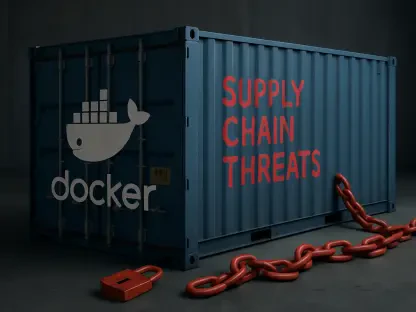The bare metal cloud market is experiencing an unprecedented surge, with projections estimating its value to reach a staggering $52.66 billion by 2033, propelled by a robust compound annual growth rate (CAGR) of 20.7% from 2025 onward. This remarkable growth isn’t merely a statistic—it signifies a profound transformation in how businesses are rethinking IT infrastructure to meet the demands of a hyper-connected, data-driven era. Unlike conventional virtualized cloud environments, bare metal cloud delivers dedicated physical servers, offering unparalleled performance, enhanced security, and minimal latency. This makes it an ideal choice for cutting-edge applications that are shaping the digital landscape, from artificial intelligence to real-time analytics.
At the heart of this market’s ascent is the ability of bare metal cloud to provide direct access to hardware resources without the burden of a virtualization layer. This setup has become a game-changer for enterprises grappling with high-performance computing (HPC) tasks, including machine learning, big data processing, and Internet of Things (IoT) implementations. As the need for infrastructure capable of handling compute-intensive workloads intensifies, bare metal solutions are emerging as a critical component, promising not only speed but also precision in execution. This article explores the dynamic forces fueling this market’s expansion, delving into the technological trends, industry shifts, and strategic innovations that are redefining modern IT frameworks.
Understanding Bare Metal Cloud
Defining the Technology
The concept of bare metal cloud revolves around a distinct approach to cloud computing, where users gain access to dedicated physical servers rather than shared, virtualized environments. This fundamental difference eliminates the virtualization layer, allowing direct interaction with hardware resources. Such a setup ensures top-tier performance by minimizing overhead and reducing latency, which is often a bottleneck in virtualized systems. For businesses running applications that demand raw computational power, this technology offers a significant edge, enabling faster processing and more efficient resource utilization. Additionally, the absence of multi-tenancy reduces potential security vulnerabilities, making it a preferred option for sensitive workloads.
Beyond performance, the architecture of bare metal cloud stands out for its ability to cater to specialized needs. Unlike traditional cloud models where multiple users share the same physical hardware, this system dedicates an entire server to a single tenant. This exclusivity translates into consistent performance without the risk of “noisy neighbors” impacting operations. Industries leveraging advanced technologies, such as gaming or scientific research, find this setup particularly beneficial as it supports customized configurations tailored to specific requirements. As a result, bare metal cloud is not just an alternative but a strategic necessity for certain high-stakes applications.
Market Relevance
Bare metal cloud has cemented its position as a vital pillar of modern IT strategies, driven by the escalating demands of high-performance computing. Applications like artificial intelligence (AI), machine learning (ML), and big data analytics require infrastructure that can handle immense computational loads without faltering. This technology meets those needs by providing the raw power necessary to process complex algorithms and vast datasets in real time. Its role extends to supporting IoT ecosystems, where billions of connected devices generate continuous data streams that must be managed efficiently, often under tight time constraints.
The growing reliance on digital transformation across industries further underscores the relevance of bare metal cloud. Enterprises are increasingly adopting this infrastructure to stay competitive in a landscape where speed and reliability are paramount. From financial institutions processing real-time transactions to healthcare providers managing critical patient data, the ability to deploy dedicated servers offers a robust solution that virtualized environments often cannot match. As businesses continue to prioritize performance and security in their IT investments, bare metal cloud is poised to play an even larger role in shaping the future of enterprise technology.
Key Growth Drivers
Hybrid Cloud Adoption
The rise of hybrid cloud architectures is a significant force behind the bare metal cloud market’s expansion, as enterprises seek to balance scalability with performance. By integrating the flexibility of public cloud services with the raw power of dedicated bare metal servers, businesses create a versatile framework suited for diverse workloads. This approach is particularly effective for latency-sensitive applications, such as real-time financial trading or online gaming, where even milliseconds of delay can have substantial consequences. Hybrid models allow companies to allocate resources dynamically, ensuring that mission-critical tasks run on high-performance infrastructure while less demanding operations utilize cost-effective public cloud options.
This blending of technologies reflects a pragmatic shift in IT strategy, where bare metal cloud is not seen as a replacement for virtualized systems but as a complementary tool. Enterprises benefit from the ability to scale operations seamlessly while maintaining control over critical components through dedicated hardware. This dual approach also facilitates compliance with regulatory requirements by keeping sensitive data on isolated servers. As more organizations recognize the value of hybrid environments, the demand for bare metal solutions continues to grow, positioning them as a cornerstone of modern cloud strategies that prioritize both efficiency and adaptability.
IoT and Big Data Boom
The exponential growth of IoT and big data is reshaping the technological landscape, creating an urgent need for infrastructure that can manage massive data volumes in real time. With billions of connected devices generating continuous streams of information, businesses face the challenge of processing this data swiftly and efficiently. Bare metal cloud addresses this by enabling edge deployments, where computing power is positioned closer to data sources. This proximity drastically reduces latency and cuts down on bandwidth costs, making it an ideal solution for industries like manufacturing, where real-time analytics drive operational decisions in smart factories.
Edge computing powered by bare metal servers is transforming how data is handled across distributed networks, particularly in scenarios demanding instant responses. For instance, in the realm of Industry 4.0, technologies such as robotics and digital twins rely on immediate data processing to optimize production lines and predict maintenance needs. By minimizing the distance data must travel, bare metal cloud ensures that insights are delivered without delay, enhancing decision-making capabilities. This trend is gaining momentum as more sectors, from retail to transportation, adopt IoT solutions, further fueling the market’s growth by highlighting the critical role of dedicated infrastructure in a data-centric world.
AI and Deep Learning Demands
The surge in AI and deep learning workloads is a powerful catalyst for the bare metal cloud market, as these applications demand exceptional computational resources. Training complex models and running simulations require hardware that can handle intensive processing, often relying on specialized components like GPUs. Bare metal servers, with their direct access to such high-powered resources, provide the necessary muscle to support these next-generation tasks. Providers are responding to this demand by rolling out innovations like GPU-powered bare metal servers, designed specifically for AI, machine learning, and HPC workloads, ensuring optimal performance for cutting-edge projects.
Strategic partnerships between infrastructure providers and AI software companies are also accelerating this trend, creating integrated solutions that streamline complex processes. These collaborations enable seamless environments for model training and inference at scale, reducing the technical barriers for enterprises adopting AI technologies. As industries ranging from healthcare to automotive increasingly incorporate AI into their operations—whether for diagnostics or autonomous systems—the need for robust, dedicated infrastructure becomes undeniable. This focus on tailored hardware and ecosystem integration underscores how bare metal cloud is evolving to meet the sophisticated demands of modern computational challenges.
Security and Privacy Needs
In an era where data breaches pose constant threats, the security advantages of bare metal cloud are driving significant market interest. Unlike virtualized environments where multiple tenants share physical hardware, bare metal servers offer a single-tenant architecture, drastically reducing the risk of unauthorized access or cross-tenant vulnerabilities. This isolation is particularly appealing to industries handling sensitive information, such as banking and healthcare, where data privacy is non-negotiable. By providing a dedicated environment, bare metal cloud ensures that critical data remains protected from external interference, addressing a core concern for businesses worldwide.
Advancements in cloud technology are further enhancing the appeal of bare metal solutions by improving service delivery and standardizing hardware infrastructure. These developments make it easier for companies to transition from traditional hosting to secure, dedicated platforms without sacrificing efficiency. As regulatory frameworks around data protection tighten globally, the shift toward infrastructure that inherently prioritizes security becomes more pronounced. This growing emphasis on safeguarding information is a key reason why enterprises are increasingly investing in bare metal cloud, viewing it as a safer alternative that aligns with both operational and compliance needs.
Market Segmentation Insights
Diverse Applications Across Segments
The bare metal cloud market’s diversity is evident in its segmentation by type, organization size, and industry, each revealing unique growth patterns. By type, the hardware segment—encompassing compute, network, and storage—leads in revenue, driven by the widespread adoption of hybrid strategies among enterprises of all sizes. This dominance stems from the need for dedicated servers that deliver uncompromised performance alongside the scalability of public clouds. Meanwhile, the services segment, which includes integration, migration, and consulting, is gaining traction as businesses seek expert guidance to navigate the complexities of transitioning to and managing bare metal environments, ensuring seamless implementation.
When viewed through the lens of organization size, large enterprises currently hold the largest market share, leveraging their resources to invest in high-performance infrastructure for compute-intensive tasks like AI and real-time transactions. However, small and medium-sized enterprises (SMEs) are also emerging as key contributors, especially as costs decrease and providers offer more tailored, accessible solutions. Across industries, manufacturing stands out with a projected CAGR of 24.7%, fueled by the adoption of Industry 4.0 technologies such as robotics and IoT. Other sectors, including banking, financial services, and IT, are also significant players, drawn by the need for low-latency, secure infrastructure to support their operations.
Broader Industry and Size Dynamics
Delving deeper into industry-specific trends, the rapid growth in manufacturing highlights how bare metal cloud aligns with the demands of modern industrial innovation. The integration of AI, IoT, and digital twins in production processes requires infrastructure that can handle real-time data processing without hiccups. Bare metal servers provide the necessary speed and reliability, enabling manufacturers to optimize workflows and reduce downtime through predictive analytics. This sector’s trajectory serves as a benchmark for how specialized infrastructure can drive transformation, setting a precedent for other industries to follow as they embrace digital tools.
Organization size further illustrates the market’s broad appeal, with large enterprises paving the way through early adoption of bare metal solutions for their extensive workload needs. These entities often manage complex operations that demand dedicated hardware to ensure consistency and performance under heavy loads. Conversely, SMEs are increasingly entering the fray, benefiting from evolving pricing models and managed services that lower the barrier to entry. This democratization of access is expanding the market’s reach, allowing businesses of varying scales to harness the power of bare metal cloud and adapt to a competitive, technology-driven environment.
Regional and Competitive Dynamics
Global Growth Patterns
Geographically, the bare metal cloud market showcases varied growth trajectories, with North America leading the charge due to its advanced technological ecosystem. The region benefits from a high demand for dedicated servers to minimize latency, coupled with substantial investments in big data, social media, and IoT applications. The presence of major cloud providers and a mature IT infrastructure in the United States further solidifies its position at the forefront. This dominance reflects a market environment where innovation and adoption of cutting-edge solutions are deeply ingrained, driving consistent demand for high-performance computing resources.
In contrast, regions like Asia Pacific are emerging as hotspots for rapid growth, fueled by accelerating industrialization and digital transformation initiatives. Countries such as China, India, and Japan are witnessing significant expansions in IT infrastructure, creating fertile ground for bare metal cloud adoption. As businesses in these areas prioritize digitalization to enhance competitiveness, the demand for robust, low-latency solutions surges. This regional disparity highlights how local factors—ranging from technological readiness to economic policies—shape market dynamics, with emerging economies poised to contribute substantially to global growth in the coming years.
Industry Competition and Innovation
The competitive landscape of the bare metal cloud market is marked by intense rivalry among key players striving to innovate and capture market share. Companies like IBM Corporation, Equinix Metal, and Oracle Corporation are at the forefront, focusing on strategic initiatives to enhance their offerings. Product launches, such as GPU-powered bare metal servers tailored for AI and machine learning workloads, exemplify the industry’s pivot toward meeting specialized demands. These advancements cater to enterprises requiring high computational power, ensuring that providers remain relevant in a rapidly evolving technological space.
Partnerships also play a pivotal role in shaping the market, with infrastructure providers collaborating with AI software firms to deliver integrated solutions. These alliances streamline the deployment of complex workloads, making it easier for businesses to adopt advanced technologies without extensive in-house expertise. Additionally, a focus on automation and orchestration compatibility is simplifying the management of bare metal environments, enhancing user experience. As competition intensifies, such strategic moves by major players are not only driving innovation but also setting new benchmarks for performance and accessibility in the market.
Path Forward for Market Evolution
Reflecting on the insights gathered, it’s evident that the bare metal cloud market has carved a transformative path by addressing critical needs in performance, security, and scalability over recent years. Its growth has been fueled by a synergy of technological trends, from the rise of AI to the proliferation of IoT, each demanding infrastructure that can keep pace with innovation. The market has adapted dynamically, with providers and enterprises alike recognizing the value of dedicated servers in a landscape where virtualized solutions sometimes fall short.
Looking ahead, the focus should shift toward sustaining this momentum through continued investment in edge computing and hybrid architectures. Stakeholders must prioritize developing solutions that further reduce latency and enhance data processing at the source, especially as distributed networks expand. Collaboration between industry leaders and emerging players will be crucial to democratize access, ensuring that businesses of all sizes can leverage these advancements. By addressing evolving challenges and seizing emerging opportunities, the bare metal cloud sector can solidify its position as an indispensable element of future IT ecosystems.









